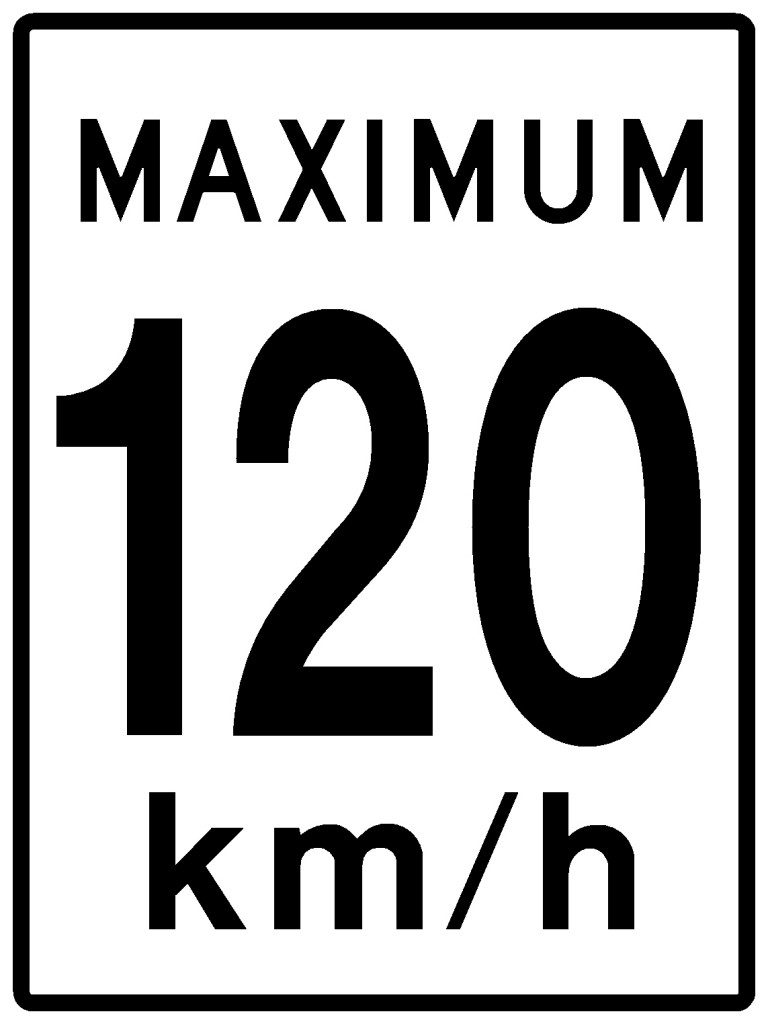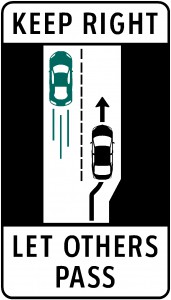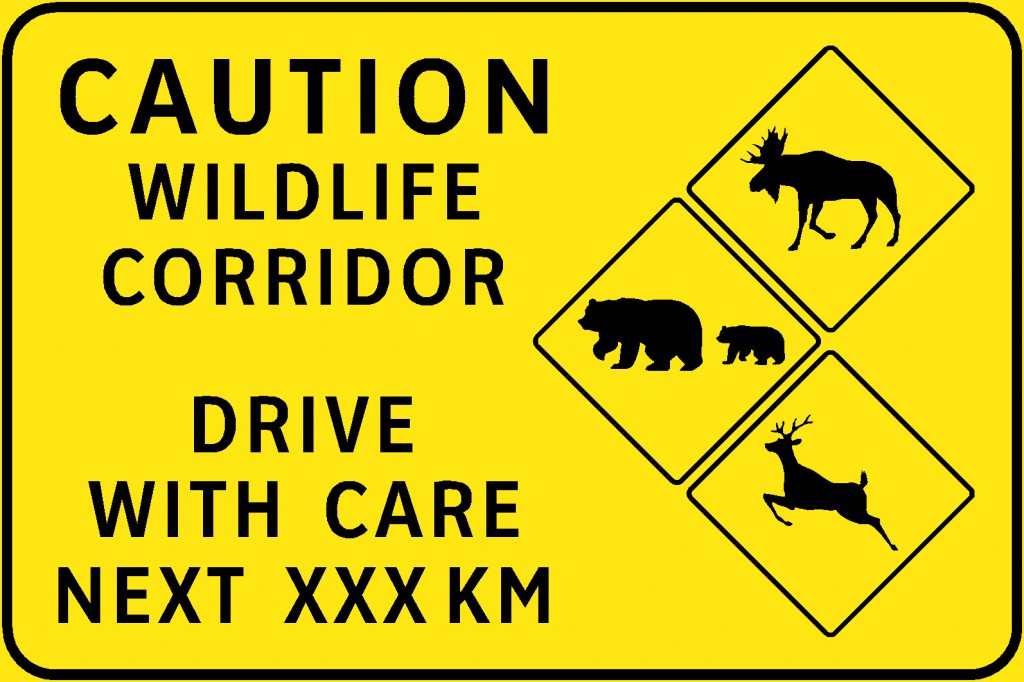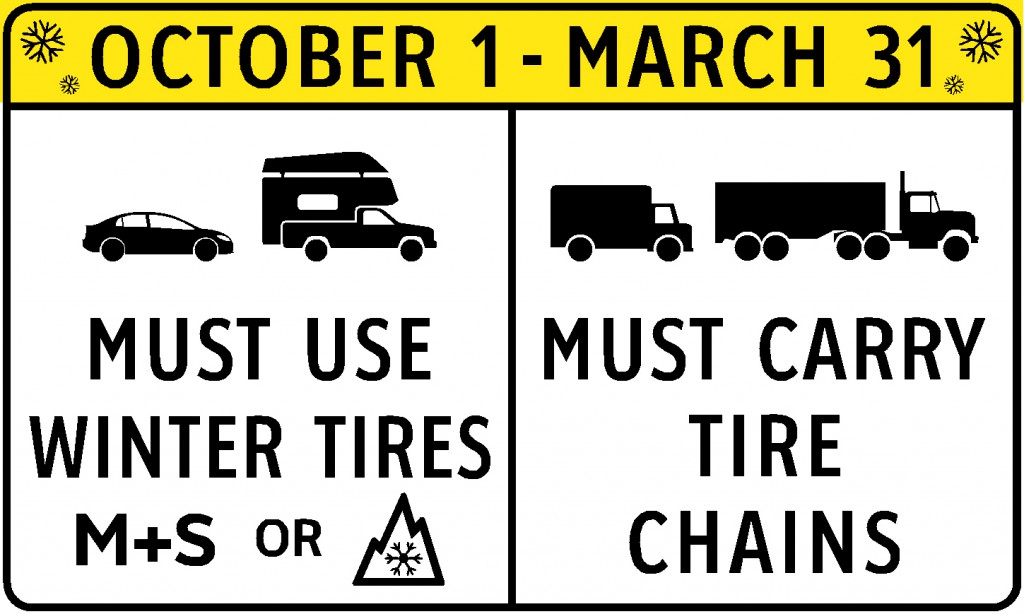The results of the province-wide Rural Highway Safety and Speed Review are here. We went out on the road to speak with you in person and online from Nov. 29, 2013 to Jan. 24, 2014 to assess four key areas of road safety on rural highways:
- slow moving vehicles
- wildlife safety
- requirements for winter tires
- setting appropriate speed limits
At the same time, we conducted technical work, including research from other jurisdictions, and an engineering assessment of the speed, safety, design and land use for all the individual highway segments identified for speed increases. Your input and the information we gained through that technical review helped to identify and prioritize these improvements.
Frustrated by the safety hazards caused by slower-moving vehicles? You let us know. The ministry will be bringing forward changes to the Motor Vehicle Act to clarify the requirement for slower vehicles to keep right, while giving police clearer direction on how to enforce the requirement. We’ll also be increasing driver education about the importance of keeping to the right except to pass, and adopting new signage and pavement markings to increase voluntary compliance.
Public consultation found that people were generally divided across all regions on the degree that slower-moving vehicles were a safety concern. The exception was Highway 4 from Parksville to Tofino, for which 70% of respondents thought it was an issue. In light of this, we’re going to pilot “Slow Traffic Delaying 5 Vehicles Must Use Pullout on Hwy 4” signage in that area.
Wildlife Safety
What you told us was that you didn’t often find wildlife to be a concern in the south coast and southern interior areas of BC, while those in the central and northern parts of the province felt more likely to find wildlife to be a safety concern. As well, our data indicates that collisions involving wildlife are prevalent and identifies a number of higher risk areas.
Here’s what we’re going to do:
- Install gateway signs at the entrance to highway corridors with higher instances of wildlife collisions.
- Increase the use of flashing LED warning signs and wildlife fencing in high crash locations.
- Pilot project: two wildlife detection systems in a known high wildlife accident area on Highway 3 between Cranbrook and Sparwood. This section has some of the highest deer and elk mortality rates in the province.
- We will also continue to monitor wildlife incidents, identify high-risk sections, and implement further measures as needed.
Winter Tires Requirements
After our assessment and hearing from you, we’re going to update legislation to clarify that winter tires includes those rated Mud and Snow (M+S) and those with the mountain/snowflake symbol. Studded tire and chain regulations will also be updated to reflect new technology.
To really reinforce this, we’re installing new winter tire signs to clarify the requirements for winter tires and chains and the time-frame for use (was October 1 to April 30). We will also work with our road safety partners to put additional resources into the “Shift Into Winter” campaign, which reminds motorists to prepare their vehicles, consult DriveBC, and drive to road conditions.
Setting Appropriate Speed Limits
Speed limits will be adjusted on approximately 1,300 kilometres, or about 15% of the total highway reviewed (9,100 km) during this process. Most of the recommended increases are limited to an additional 10 km/h with the province’s new maximum speed limit on certain sections of divided multi-lane highway raised to 120 km/h.
The majority of participants in the southern part of the province support increasing speed limits.
- 56% in central BC
- 72% in the Okanagan
- 61% in the southern interior
- For the Coquihalla/Trans-Canada Highway corridor, 70% supported a speed increase
- 81% in the Lower Mainland
- 55% on Vancouver Island
Participants in the northern region were more divided on speed limits.
- 52% of participants indicated they would prefer no change to speed limits.
- 42% of participants indicated that speed limits should increase.
Fueled by these results, decisions on each specific section of highway were also based on an engineering study which included an assessment of the ambient speed, highway safety, road design, and land use to make the final decision.
Here’s what we’re going to do:
- Speed limit changes to approximately 1,300 kilometres of provincial highway (35 sections) in the BC southern interior, Lower Mainland and Vancouver Island.
- No changes to speed limits on rural provincial highways in northern British Columbia.
- Pilot variable speed zones on sections of the Trans-Canada, Coquihalla, and Sea-to-Sky highways.
The ministry and its safety partners will monitor the speed and safety performance of the sections of highway where changes are being made to ensure the numbers of serious crashes continue to decline.
Unless otherwise noted, new speed limits will be phased in over the summer.
|
BC Highway |
Area |
Current Speed Limit |
New Speed Limit |
|
Fraser Valley and Fraser Canyon |
|||
| Highway 1 | Whatcom Rd to Highway #3 Junction | 100 | 110 (starts July 2,2014) |
| Highway 1 | East of Lake of the Wood Rest Area to Boston Bar | 80,90 | 100 |
| Highway 1 | Boston Bar to Falls Creek | 90 | 100 |
| Highway 7 | Vehicle Pull-out west of Haigh Scale, Agassiz to Highway #1 Junction, Hope | 90,100 | 100 |
|
Sea to Sky |
|||
| Highway 99 | Eagle Ridge Interchange, Horseshoe Bay to south of the Stawamus River Bridge near Squamish | 80 | 90 |
| Highway 99 | North of Depot Rd, Squamish to Function Junction, Whistler | 80, 90 | 100 |
| Highway 99 | South of Whistler Heliport Rd to Pemberton Boundary | 80 | 90 |
| Highway 99 | East of Lillooet near the Pavilion Lime Plant to the Highway #97 | 90 | 100 |
|
Vancouver Island |
|||
| Highway 1 | Three 80km/h sections between Bench Rd, Cowichan Bay and Beck Rd, north of the Nanaimo Airport | 80, 90 | 90 |
| Highway 19 | Parksville to south of Willis Rd, Campbell River | 110 | 120 |
| Highway 19 | Duncan Bay Rd to Menzies Rd, Campbell River | 80 | 90 |
| Highway 19 | Campbell River to Sullivan Rd, Sayward | 90 | 100 |
| Highway 19 | North of Campbell Way, Port Mcnellis to Douglas Street, Port Hardy | 80, 90 | 100 |
|
Southern Interior |
|||
| Highway 1 | Six Mile Rest Area near Tobiano to Savona | 90 | 100 |
| Highway 1 | Chase to Hilltop Rd, East of Sorrento (excluding 60km/h section through Sorrento) | 90 | 100 |
| Highway 1 | Canoe to Highway 23 South, Revelstoke (excluding 60km/h section through Sicamous) | 90, 100 | 100 |
| Highway 1 | Highway 23 North, Revelstoke to Anderson Rd, Golden (excluding parks) | 90 | 100 |
| Highway 3 | Start of Highway 3 to Highway 5 Coquihalla junction | 100 | 110 |
| Highway 3 | Sunshine Valley to Manning Park East Boundary | 80, 90 | 100 |
| Highway 3 | Sunday Summit to Whipsaw Creek, west of Princeton | 80 | 90 |
| Highway 5 | Hope (Exit 177) to Othello Rd | 100 | 110 (starts July 2,2014) |
| Highway 5 | Othello Rd, near Hope to Highway 1 junction | 110 | 120 (starts July 2,2014) |
| Highway 5 | Heffley to Little Fort (excluding 60km/h section through Barriere) | 90 | 100 |
| Highway 5A | Old Hedley Rd, north of Princeton to Highway 97C junction (excluding 70km/h section through Aspen Grove) | 80 | 90 |
| Highway 6 | New Denver to Purdy Rd, north of Hills (excluding 70km/h section through Hills) | 80 | 90 |
| Highway 6 | Purdy Road, Hills to Upper Brouse Road, Nakusp | 90 | 100 |
| Highway 33 | South of Gallagher Road to McCulloch Road | 90 | 100 |
| Highway 33 | North of Highway 3 junction, Rock Creek to Westbridge | 90 | 100 |
| Highway 97 | North of Willow Drive, 70 Mile House to BCR Overpass, 100 Mile House | 100 | 110 |
| Highway 97 | Gatzke Rd, north of Oyama to College Way, south of Vernon | 90 | 100 – Pending completion of engineering assessment to determine if median barriers are required before implementation of the new speed limit |
| Highway 97 | Highway 97A junction near Swan Lake to Westside Rd | 80 | 90 |
| Highway 97A | North of Smith Drive, Armstrong to Highway 97B junction, Enderby (excluding 50 km/h section through Enderby) | 90 | 100 |
| Highway 97A | Highway 97B junction, near Grindrod to Sicamous (excluding 50 km/h section through Grindrod) | 80 | 90 |
| Highway 97C | Merritt to Aspen Grove | 100 | 110 |
| Highway 97C | Aspen Grove to Drought Hill Interchange, Peachland | 110 | 120 (starts July 2,2014) |
Remember, speed limits are the maximum speed for ideal conditions so reduce speed in rough weather or poor road conditions. Checking DriveBC before leaving home is a good idea, too.
Your safety remains the ministry’s number one priority. We will continue to closely monitor safety on all provincial highways, and are committed to the ongoing evaluation and monitoring of speed limits and safety measures. We’ll be working closely with the road safety community through the Road Safety Executive Steering Committee.
This committee includes the ministry as well as health professionals such as the Provincial Health Officer and the Chief Coroner, the RCMP and local law enforcement, ICBC, WorkSafeBC, and RoadSafetyBC. The ministry will also work to improve the way that data critical to identifying trends in highway safety is shared among all committee members.
The number of serious crashes on provincial highways has decreased by 28 per cent since 2003. This is the direct result of targeted and strategic enforcement, driver education, improved vehicle technology, and increased penalties.




Thanks for requiring drivers to stay in the right lane except to pass, but does the graphic accompanying the instruction not encourage drivers to do the exact opposite? Green car in the left lane, car passing on the right. IMO I would have the graphic flipped with the green car in the right and the car passing on the left.
My wife & I recently traveled down highway 99 to visit family in North Vancouver on our motorcycles. The newly paved portions are great & it’s a very well engineered road. My question is the speed limit there. While the 60 kph limit is valid for large vehicles, recreational vehicles, & those towing trailers, today’s motorcycles & cars are capable of safely navigating that highway at 80 kph. Has the ministry given any thought to a dual speed limit like the one in place to the west of Kamloops?
Hi Harry,
We will be piloting variable speed limits in 3 areas on Highway 99, 5 and 1 but these are based on driving conditions, not type of vehicle. We did look at the speed limits as you’ve mentioned but after speaking with the trucking industry and understanding how they self-regulate for fuel efficiency, it was decided to keep the speed limit consistent for all vehicles. Thanks for the comment/question.
Some of the new higher speed limits are warranted, some are not. I live in Spallumcheen, north of Armstrong & through the summer tourist season, you are risking your life every time you turn left (south) onto highway 97a. With the speed limit raised to 100 kph it will be significantly more dangerous to leave home.
Thanks for your feedback Harry.
In total, we’re raised the speed limits (the majority of which by an additional 10km/h) of about 10% of our highways, and will match the speed limit with the existing travel speeds to improve consistency. Having said that, we, along with our safety stakeholders, will continue to monitor the sections of highway where speed limits were changed to ensure public safety and allow us to take any further actions needed.
Thanks again for your comments and feedback. Something we should make clear, is that the ministry is increasing speed limits where traffic is already habitually driving faster than the current speed limits, not where drivers are traditionally driving the limit. We aren’t encouraging people to drive faster but rather posting the right speed to match the character of the road (supported by engineering assessment). And we’ll continue to monitor and check the highway areas where speed limits were changed to ensure public safety and to take any additional actions that may be necessary.
Wish I worked in a world where an increase in speed limits didn’t result in an increase in average driving speed, longer stopping distances, longer lines of frustrated drivers behind slow vehicles on winding mountain 2 lane highways, more (often dangerous) passing (I often see vehicles passing in the advanced warning area of construction zones)…
Honestly, all road speed signs should be replaced with solar-powered LED signs (filtered, so that glare isn’t a night-time distraction from seeing the road). This way:
a) if scheduled road work is taking place, the signs can have a yellow caution border and lower limit indicating traffic must slow down and be aware of construction work signs.
b) if roads become wet, the signs can have a blue border, with the speed limit dropping 10km/h.
c) if roads become icy, the signs can have a blue border, with the speed limit dropping 10-50%.
d) if wildlife is detected on a day with otherwise excellent driving conditions, the signs can have a green and yellow-glowing border, with the standard speed limit, but indicating caution, and the words “caution: wildlife” could appear somewhere on the sign.
e) if an emergency situation is in effect, a red-glowing border could appear with the words “keep right” for two-lane traffic.
Also, most traffic in the slow lane tends to already go the speed limit, which means in order to pass traffic must travel faster than the speed limit. Instead of increasing the hard-limits of the roads, why not just make it “Limit: +10km/h to pass only”? I have a feeling that increased speed limits means the maximum speed people will be willing to go will increase as well, leaving drivers more likely to make high-speed errors and lose control of their vehicles. Just a thought.
Words cannot describe how I feel about this as a resident of Hope BC. The highway exits to our town are even more dangerous than they currently are. Excessive speed tickets on the highways through Hope are now 140 km/h eastbound and 150km/h westbound. Old Hope Princeton Way (of 5 westbound) is a residential connector roadway at 60/50 km/h with a sideway on the right. Our children already have to walk into town looking over our shoulder. Now our children need eyes in the back of their heads to watch for vehicles decelerating from 150km/h. Higher speeds are not the answer. The problem are the drivers, no if’s and’s or but’s, regardless of all those who post here stating they are “capable”. It is “speed differential” and driving “conditions” that cause accident. You’ve just increased the legal speed differential.
Thanks for your comment Alan, and sharing your concern.
The ministry and its partners (ICBC, RCMP) will continue to monitor the sections of highways where speed limits were changed to ensure public safety and to allow us to take any additional actions that may be necessary.
Drivers must drive to conditions, and put safety first, regardless of speed limit.
Given that BC is moving to an Alberta style of highway speeds, even though BC doesn’t have the same road conditions, I have a suggestion. Implement photo radar and a zero tolerance for exceeding the new higher highway speeds. Photo radar works in Alberta! Speed enforcement on many of the BC highways listed is difficult due to the lack of safe places to stop speeders. This gives the motoring public the unencumbered opportunity to exceed the old speeds, which resulted in the “why not increase the speed, I do it anyway” mentality. The same condition applies to the new higher speeds. On Hwy 3 east of Hope I’ve yet to see enforcement where the aircraft petrol segments were implemented last year. A good idea, but nor really practical. Photo radar, regardless of it’s politically unpopular impact to the elected government, is the only real answer to enforcement where officer safety is the primary reason for lack of enforcement. Having said all that, let’s look at Ontario where trucks are governed, by law, to 104 KM/H in the interest of public safety. Ontario has no where near dangerous driving conditions as BC in terms of terrain and narrow roads. Ontario leads the country in public road safety by reducing speed differential, BC increases the risks associated with speed differential. Every day trucks and RV’s are burning up brakes on our extreme BC grades. Yet we increase speed on those same hills around Hope and other areas.
What happened to Northern BC?
Hi Liz,
After our engineering assessment, the review tells us that speed limits are set appropriately in the Northern region, and the results of our public consultation support that.
Thanks to you I am looking for a new job.
For the last 6 years I have risked my life every day I have worked as a flagger on the Trans-Canada highway – often at night and in dreadful weather conditions. Today you have decided to increase the hazard by increasing the speed limit. I can’t count the number of times I have had to move out of the way of vehicles driven by inattentive drivers that were unable to stop before they passed me and my stop sign.
So I am looking for a new job. I certainly won’t be risking my life again this winter.
Thanks for your comment Nicholas,
Today we announced speed limit increases on about 1300km (of 9100km) of our provincial highways, however speed limits within cone zones/construction zones hasn’t changed. Safety is our #1 priority and always will be. We also work to increase safety awareness in cone zones with multiple other organizations (ICBC, WorkSafe, Traffic Pro Services, etc.) through the Cone Zone campaign.
I regularly get complaints from drivers who tell me I should have signs out – AFTER THEY HAVE DRIVEN PAST THE SIGNS. Pious platitudes about safety being our #1 priority won’t stop inattentive drivers having to brake from 10 km/h faster and coming to a stop 15-20 m later. I bet no-one who made these decisions has spent any time lately actually standing on the road controlling traffic at a construction zone, accident scene or highway closure. You try keeping working the rest of your shift after an transport heading straight at you has left 50m of skid marks on the highway (which has happened twice to me so far this year).
I suspect that the Minister and all his bureaucrats in Victoria don’t understand that construction signs don’t magically appear on the highway. Flaggers have to put out and pick up the signs – one of the most dangerous parts of our job. Here the road shoulders are narrow and especially in winter we have to park partly in the travel lane when we are putting out and picking up signs. Now we will have to do this with the traffic flowing faster.
Inattentiveness is always going to be there. Chances are, drivers that didn’t respect you and value your life aren’t going to pay a whole lot attention to the speed limit either. Increasing the limit is pretty much a formality in a sense for the idiots who aren’t paying attention.
What I have seen in Ontario are work trucks with rear ending barriers, which gives a better chance of idiots like them wrecking their car without harming people like who work. Are there none for the BC highways?
I’ve seen impact barriers on work trucks used on divided highways. They wouldn’t be as much use on two lane winding highways through the mountains like the Trans-Canada around Revelstoke.
The real problem here is they are increasing speed limits on a highway that should have been upgraded to meet the increased traffic levels decades ago (I’ve read a summary of the many, many Ministry reports that said that). The highway simply isn’t adequate to handle the volume of traffic, the high proportion of heavy transport trucks. It is a 1960s minor highway handling 2010s major highway traffic. Then add the heavy winter snowfalls when we have to do a LOT of maintenance work 24/7 just to keep the highway open between the avalanche and accident closures…
Being in a safer, modern vehicle doesn’t do you that much good when you are in a head on smash with a combined closing speed of 180km/h+ (I’ve attended far too many here).
Oh and by 24/7 maintenance I mean flaggers out on the road – either doing 20minute closures for snow removal or single laning for vehicle recoveries – sometimes in multiple locations. I would LOVE to see the Minister and his senior bureaucrats do that at night in a snowstorm on a white highway.
Part of the problem is with drivers but not the whole problem. The traffic control have to accept some responsibility – signs that are plced up to 4 km or more prior to a work zone – drivers do not expect to drive for up to 10 minutes before even seeing a work site. Traffic control points that are at best confused – allowing one direction of minimal (or two/three tractor trailer units) traffic and about 1/2 km of traffic held in the other direction. I realize it is probably not a career position but there is more than one side to this story.